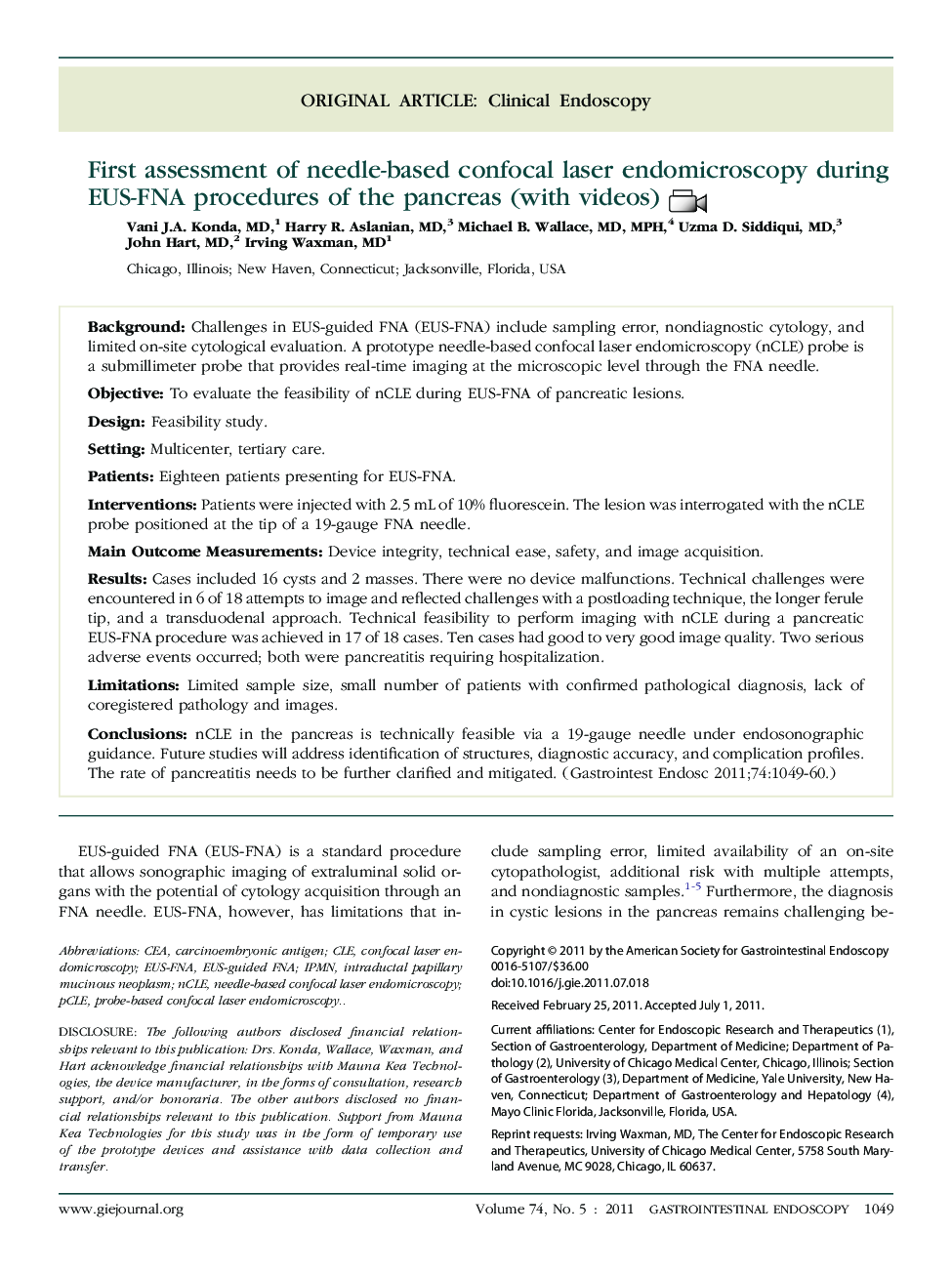| Article ID | Journal | Published Year | Pages | File Type |
|---|---|---|---|---|
| 3305361 | Gastrointestinal Endoscopy | 2011 | 12 Pages |
BackgroundChallenges in EUS-guided FNA (EUS-FNA) include sampling error, nondiagnostic cytology, and limited on-site cytological evaluation. A prototype needle-based confocal laser endomicroscopy (nCLE) probe is a submillimeter probe that provides real-time imaging at the microscopic level through the FNA needle.ObjectiveTo evaluate the feasibility of nCLE during EUS-FNA of pancreatic lesions.DesignFeasibility study.SettingMulticenter, tertiary care.PatientsEighteen patients presenting for EUS-FNA.InterventionsPatients were injected with 2.5 mL of 10% fluorescein. The lesion was interrogated with the nCLE probe positioned at the tip of a 19-gauge FNA needle.Main Outcome MeasurementsDevice integrity, technical ease, safety, and image acquisition.ResultsCases included 16 cysts and 2 masses. There were no device malfunctions. Technical challenges were encountered in 6 of 18 attempts to image and reflected challenges with a postloading technique, the longer ferule tip, and a transduodenal approach. Technical feasibility to perform imaging with nCLE during a pancreatic EUS-FNA procedure was achieved in 17 of 18 cases. Ten cases had good to very good image quality. Two serious adverse events occurred; both were pancreatitis requiring hospitalization.LimitationsLimited sample size, small number of patients with confirmed pathological diagnosis, lack of coregistered pathology and images.ConclusionsnCLE in the pancreas is technically feasible via a 19-gauge needle under endosonographic guidance. Future studies will address identification of structures, diagnostic accuracy, and complication profiles. The rate of pancreatitis needs to be further clarified and mitigated.
